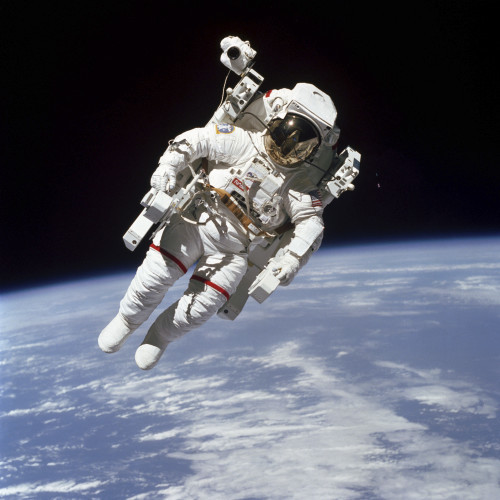Medical emergencies to an astronaut during a space mission is quite common. This is not something you might have heard of because this kind of news is most likely kept covered. A light situation or maybe even a life-threatening situation can also occur at the space. So, how are such medical emergencies handled? Obviously, your trusted family doctor is not available and you are million of miles away from the nearest hospital. Thus, what is the best possible solution?
After almost 50 years of human invading space, now we are well aware of some of the very few health risks which human might face at space. They are quite a few and we are yet not sure about what are the best possible solutions around them.
Space sickness is the very first form of uncomfortable feeling which an astronaut feels when he is at the space. This mostly occurs within 48 hours of traveling. It takes some time for the astronauts to deal with the weightless feeling. And space sickness if not properly taken care of might lead to grave dangers. Some of the most common symptoms of space sickness are loss of appetite, dizziness, and vomiting. Of course, during your training, you might be made aware of this situation and you would also be given some tips and tricks to deal with the same.
Also, colds are quite common in space because the difference in temperature and atmosphere is actually huge. But the best part is that just like earth cold and sneezing at the space also goes away on it’s own. Also, there is a special preparatory phase which enables a person to avoid cough and cold and any such kind of infectious flu disease before you are all set and ready to travel to space.
And one of the most serious health issues which are a known danger to humans during space is cardiac arrest. It can be a major or a minor cardiac arrest. But the problem in cardiac arrest is that CPR is not possible at space. And zero gravity is one of the major issues to worry here. So, what can be done in case of cardiac arrest at space? Standard side straddle, the waist-straddling maneuver, the reverse bear hug method, the handstand, and the Evetts-Russomano are some of the most common ways to deal with cardiac arrest at the space. One of the best and most effective method out of all is handstand. This has also proven to be highly successful and most sustainable. Another method which comes closer to the handstand is Evetts-Russomano. But this one is not said to be useful beyond three minutes.
Over time astronauts have also experienced weaker muscles. Loss of bones and atrophying muscles are quite common. Even blood volume loss and weakened immunity system are something which astronauts have to deal with during their mission space. Even some of the astronauts have also companied about vision altering.
One of the senior astronauts once said
“Without constant pounding on the ground, you lose bone mass. If we want to send people to Mars someday, this is something we’re going to have to learn to overcome. If the human body were to stay in space for 10 to 20 years, evolutionarily, over a long period of time, we would probably lose our skeleton in space because you don’t need it. We’d probably just become big bags of meat.”
We haven’t heard of any complexion clinical missions being taken place at the space. So, not sure about how to deal with the same.
But if a serious medical complication takes place, then evacuation to earth is the best solution. There is always a Soyuz spacecraft at ISS which is used in case of such emergencies. Once there was a situation in the year 1986 when a Soviet astronaut Vladimir Vasyutin left the space because of his prostate infection. He took almost six hours to reach back to the earth. Now, days you only take three and a half hours to reach back to the earth. So, in any case, if you require surgery then coming back to the earth is the only possible solution. Surgery is not possible at space because the blood will completely ooze out of the wound and infect the whole cabin. Technology is working on the same. Scientists are still coming up with a device and testing it. The device is called an Aqueous immersion surgical system. This is actually a saline-filled dome which is placed over the wound and keeps the blood and other body fluids in it’s the place.
But NASA has a preparatory phase where they prepare their astronauts who are all set to travel to space to minimize such emergency situations. At L-10 (10 days before the launch), the crew is kept at an isolated and controlled environment where they are prepped for space. The major reasons for the same are that the crew members are kept isolated from their family members and others so that they can avoid any kind of flu or cold. They undergo an extremely strict medical test and after that, they are kept in a scientifically controlled atmosphere. Even if anyone wants to meet them, then the said person also need to undergo a medical test and then wear a medical badge and then only he or she is allowed to meet.
Also, inside the space, there is a medical manager as well. The person is assigned with the duty of taking care of such medical emergencies. Either it is first aid or any serious medical complication, the person is fully equipped with such situations. In worst cases, evacuation to earth is the only possible solution left with.

